Text
When Worlds Collide - The Early Merger Era of USCR

I remember when I was in high school I would always try and get my school's "Car Club" up and going. I'd post flyers, give announcements over the PA and ask the teacher lending us the room for help with ideas. Unfortunately it was only ever me and one other classmate who would occupy the classroom at lunch, never really finding a single person to share my rather obsessive interest with. There was this one other kid, a senior at the time, that would be at one of the computers in the class room looking at spotters guides of some sorts. At the time I was solely a NASCAR fan, not really paying much attention to other forms of motorsport. I knew Super GT existed thanks to Gran Turismo 5, and of course there was Formula 1 but I never feigned too much interest in it. So when I peeked at his screen I noticed that it was what known as the Tudor United Sports Car Championship at the time. Of course, I didn't know what it actually was at that time. My small little NASCAR infested brain had never heard of this series before -- and that's because it was a completely new idea, birthed from years of two separate American sports car series competing for the same audience throughout the 00s and early 10s. The American Le Mans Series was much like the rest of the ACO sanctioned championships across the globe, using state of the art prototypes and factory GT efforts to fill their grids. However, by the end of the ALMS era there was a clear struggle to fill the prototype grids, with only a literal couple of P1 entrants running in any given race weekend.
The Grand-Am Road Racing Series was the complete opposite of the sleek and sexy cars ready to travel to France every June. Their top class were these tube frame "prototurtles", which in their first year looked more Florida man rather than Florida endurance classic. However, what they did have in their pocket was the iconic Daytona 24, which throughout its years would play host to multiple big time NASCAR superstars hopping in to turn right for the first time in a few good months. Their GT cars were also a bit non-orthodox for that matter too -- whereas you had Porsches and Corvettes battling it out for top honors literally shoulder checking each other Grand Am boasted Pontiac GXPs and Mazda6s... though, admittedly they were also tube frame based machines.

So when the merger news came about, obviously it was a pretty big shock to everyone's system. I mean, how the heck would these two completely different types of series fit in with one another given that Daytona Prototypes were literally pieces of metal put together to look somewhat like a race car in comparison to the prohibitively expensive prototypes that literally no one could afford to run these days... but maybe that's what sports car racing needed. After years of having to recover from the sudden decline of the sport (thanks Bernie) everyone was kinda doing whatever the hell in their own corner, with the BPR scurrying off into their own corner trying to make their own flavor of sports car racing before getting blown up by some guys from Stuttgart that would create so much baggage for Stephane Ratel that he garnered a hate boner for factory teams, the ACO still hanging onto the Le Mans 24 with its ever changing prototype category that once literally got gamed by those same German assholes from Stuttgart a few years earlier, the guys in Japan having to make a completely new regulation after their prototype series just kinda died off which even led one team fielding a 962C against some Skylines... America just kind of had to go their own way. And we all know the trope of the USA saving the world.
youtube

I mean, the mere sight of seeing these brute beasts with their loud and brash V8 motors running alongside these sleek and sexy prototypes is enough to get anyone the least bit interested just for the weird factor. The racing it gave wasn't too bad either.
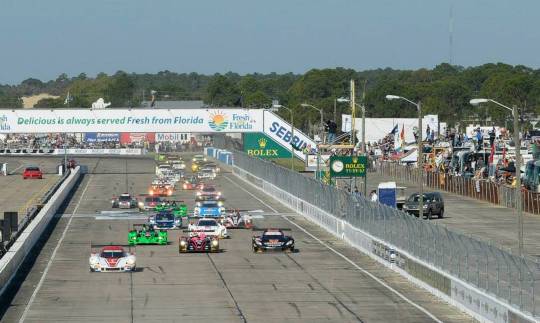
The premise of these awkward Daytona Prototypes bumbling through the bumps of Sebring just like their European brethren is worth the price of admission itself. And we haven't even gotten to the rest of the field! You had the infamous Prototype Challenge category that would provide the race with its full course yellow quotas and almost down right dangerous levels of idiocy, but they're just honestly trying their best. Of course, there was also the ever iconic GTLM field with multiple factory GT teams duking it out going all touring car on each other battling for 2nd to last, while the GTD class derived from the Grand-AM GT category had its own oddities that would be simply wrong to look over. The 911 GT America is a car that seems to come out of someone's fever dream that I wouldn't be surprised if it came up in a /r/ThomasThePlankEngine post. There was also the R8 LMS with the teeny ass wing. I don't know why I remember that, but it's always so funny to see that specific car show up in Forza games when there's literally newer R8s to feature.

youtube
Even the calendar itself was a "greatest hits" of both series, with both sides having to play on each other's grounds with the Daytona 24 and the 12 hours of Sebring being the big crown jewel events. Of course, you also had the rest of the endurance races that both series managed to carry over, the 6 Hours of the Glen from the Grand-Am side and the Petit Le Mans over on ALMS' side. Long Beach and Belle Isle were two street courses that both series brought along that would prove to be marquee events, and something of an interesting tidbit that I would be remiss to mention would be the Prototype Challenge only race at Kansas Speedway. Yeah. That layout. You know the one.

The Daytona Prototype mix of cars lasted up until the end of 2016, which would bring the beginning of the new era of sports car racing. While I don't have great opinions on the DPi platform, it nevertheless influenced the current resurgence of the prototype category, whilst the growth of the global GT3 regulation made up by our good friend Stephane Ratel would occupy the GTD category and would go on to encompass the entire field, becoming one of the many influences that would make it replace the declining GTE class as the top global grand touring class in the world. Indeed, the United part of the United Sports Car Championship really did become reality -- though it probably had a far bigger outreach than they initially expected. Or maybe it was their intention from the get-go. Who knows. Anyways, take a look at this Daytona Prototype.

7 notes
·
View notes
Text
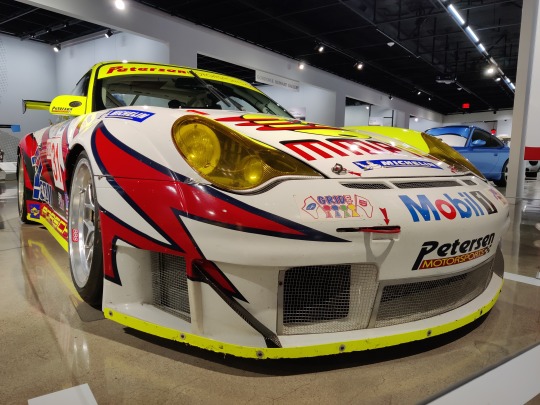
Hey all. I'm probably going to return to writing on this blog to sort of see if it's right for me. I've been thinking about doing something within journalism or something related in my future, so I decided to challenge myself to write prompts about a lot of different topics within sports car racing in the upcoming weeks. I don't know how consistent I will be (probably not very, my ADHD is a bitch) but hopefully I can have a lot of fun doing this and you readers can enjoy what I have to offer in terms of opinions and insight. Who knows, maybe this will end up working out and I'll dip my toes into actual work. Also yes, the Twitter account is back as you've seen. I'll occasionally post interesting pictures I find, though I also want to do something more with it in the future. Perhaps little "mini-blogs" within a thread? Not sure. Either way, if you want me to write about something feel free to suggest it and I'll maybe think about it. :) The picture comes from my trip to the Petersen Museum with a friend who was visiting from Michigan, it's a Porsche 911 GT3 RSR! Pretty cool car to find in person.
6 notes
·
View notes
Text
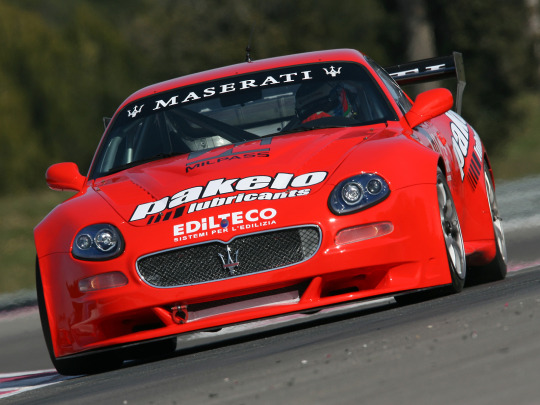
GT3-001 -- The Maserati Coupe GranSport Light GT3.
The first ever homologated GT3 car. It's a rather far cry from what we see nowadays in the class, missing the insane aero and large rear wings that seem to be the order of the day on any given racing weekend. Back in 2006, this regulation was meant to be a tier below the GT2, adopting cars from other one make series and bringing in other cars that didn't fit into the GT1 or GT2 philosophy to make a cost-efficient racing class all balanced by the SRO themselves. The rest, as they say, is history. It's now the most popular GT racing class across the world, and many pro teams and drivers fill the ranks in series such as IMSA, GT World Challenge, SUPER GT, and soon now even the WEC over the declining GTE rule set.
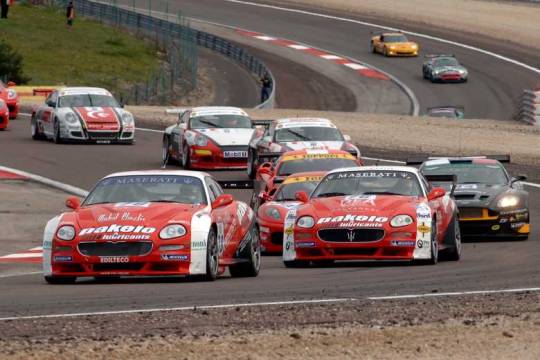
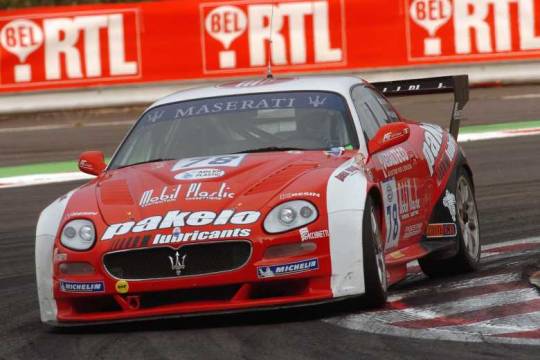
No longer are the cars taken straight from their one-make series like this GranSport Trofeo Light, adapted to GT3 regulations and racing against other cars such as the Viper Competition Coupe and 911 GT3 Cup; now they're thorough-bred bespoke racers made specifically to dominate over the rest of the manufacturers. It's a mystery when this regulation will one day fall to the wayside, but for now it's best to simply enjoy what we have in this rather exciting time.
6 notes
·
View notes
Text
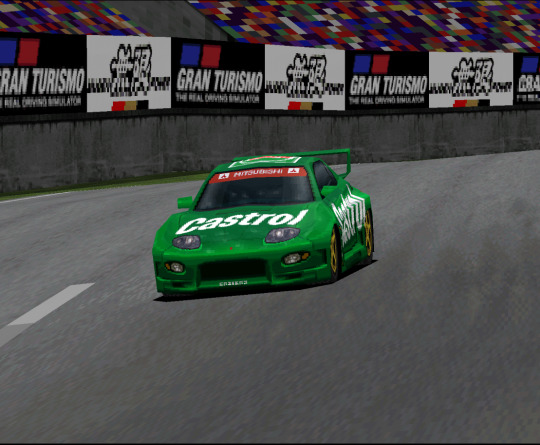
Happy 25th Anniversary to the Gran Turismo series which got me into racing in the first place. This account will always have a huge video game influence down to the cars I feature, and it's all thanks to this series that I grew up with as a child. Video games are such an important marketing tool for motorsports, especially for those young and impressionable. It's much more relatable to get behind the wheel, if only virtually, and see what the drivers could see than anything else. Something maybe IndyCar could work on.
youtube
8 notes
·
View notes
Text
Update
Sorry for no recent posts here. I've been recovering from COVID and writing stuff was the last thing on my mind. Hopefully later this week I can begin doing some write ups once more.
5 notes
·
View notes
Text
Lightspeed over the Light Rail
Say what you will about the way American cities are laid out -- they make for some awesome race tracks.

When you string together a few 90 degree turns and connect it with a squiggly line on an empty lot, it can turn out to be racing magic. Such is the case for a circuit like Long Beach. A magical minute around the coast line through some of the most glamorous sights SoCal can provide a great spectacle that lives on in racing legend for decades. Toronto provides a white knuckle ride around Exhibition Place with little room to breathe, let alone race for position. Even something as silly as the new Nashville track can have its merits, albeit if it's just for a few laughs.
However, track designers must be careful balancing a very fine line between spectacle and disaster. The characteristics that can make for a great circuit can also lead to a terrible catastrophe -- something that has been seen time and time again throughout the last 30 years. With Champ Car and Indycar alike taking their chances to reach a wider audience there is bound to be a handful of nightmares for teams and organizers alike. San Jose and Baltimore prove as such examples for when public transport wreak havoc on suspensions.

In 2005 the CCWS went to San Jose for their inaugural Grand Prix. Looking to become a second reincarnation of Long Beach, the circuit was a blinding flash through the heart of the downtown district, only coming in at a mile and a half. Whilst the rest of the circuit wasn't very memorable, one part of it did stick out in the history books for all the wrong reasons. A fast chicane had the potential to be a fun challenge for drivers and a great spectacle for fans at the track and at home. Traveling at over 150 mph through this precarious flick would showcase bravery and skill, making the car dance right on the limit. There was just one problem though...
youtube
This single light rail track would seal the fate of the GP. These stiff and agile Champ Cars would fly over this small little bump in the road, causing figurative and literal pain. Although the organizers provided a quick fix the next year, it wouldn't save the event as the demise of Champ Car would not see the event return.

Indycar picked up the slack, adding their own multitude of street circuits after the merger. In 2011 Baltimore was able to host their own race, funneling drivers around Oriole Park via a very technical layout. Drivers found the chicane before the light rail section unnecessary after the conclusion of the first ever race, leading the organizers to remove it for 2012.
They would regret suggesting it.
youtube
Friday came around, with the drivers taking to the track for their practice laps. At full speed, the cars would visibly take off from the ground and come to a hard landing with not much time to react. Several Indycar and ALMS teams then pleaded the organizers to backtrack, re-adding the chicane and avoiding any potential chaos. Well, not really, but that came down to the rest of the track.
youtube
Baltimore would exit the calendar without much grace after 2013, with scheduling conflicts and broken promises of increased city revenue ultimately killing hopes of becoming a regular fixture in the motorsports calendar.
11 notes
·
View notes
Text
No big post for today, but have an onboard at Oschersleben in the 2004 MC12.
12 notes
·
View notes
Note
Hey! It's RKD from Twitter. I know it's a bit of an odd shift, but do you still happen to have the images that I sent to you for the bot and are you gonna plan write ups, or are you gonna do your own thing for the Tumblr? Either way, I enjoy the content you've provided here so far.
Hey, I'll pretty much use everything I got for the upcoming days. Includes all the requests and such. We'll see. Thanks for reaching out~
0 notes
Text
Panoz Esperante GTLM GT2
Georgia's finest got to hang with the giants from Italy and Germany in a magical 2006 sportscar season.
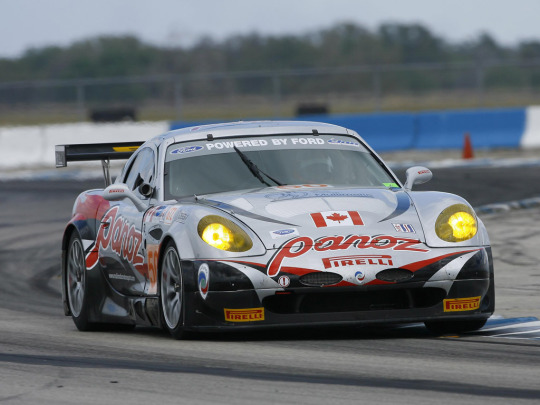
Whether it was by sheer pace at the 12 Hours of Sebring or enduring attrition at a tough 24 Hours of Le Mans, the Esperante GTLM was able to shine through as a venerable contestant in the close quarters of the GT2 category.
First tested in 2004, it went to have it's first competitive season in 2005. Poor results would befall the Panoz Racing Team unfortunately, having to spend the winter improving their car.
Multimatic would come back with a vengeance. The #50 team put the car on pole for the half a day endurance, putting on a blinding performance and holding back a determined Flying Lizard 911 and a blazing Risi F430 for the class win after all was said and done.
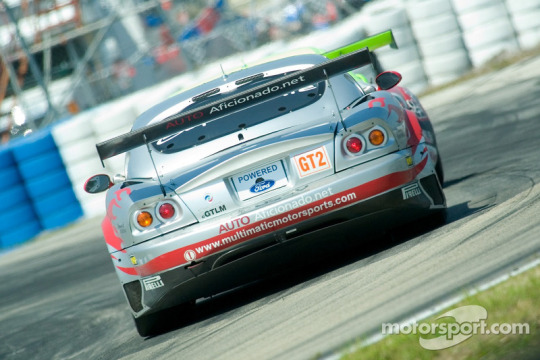
Team LNT would bring the Panoz crew a victory later in June, overcoming a race filled with attrition for the prestigious 24 Hours of Le Mans class win.
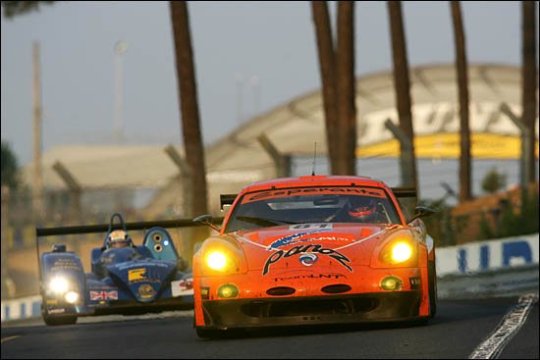
At it's heart is a Ford-Elan powered naturally aspirated 5 liter V8 engine, paired with a Hewland 6-speed driving the wheels at the rear. Whilst the power was second to none, the handling was rather questionable with Richard Dean and Tommy Milner both sharing their woes with the car at the limit. The aluminum chassis also made it a rather toasty cabin to sit in. Despite all the short comings, the trusty Esperante still managed to look like a dream.
youtube
The success wouldn't last for long, as 2007 was a poor year for the aging chassis. The car took home zero wins and was clearly not up to challenge the new 997 and the oncoming of multiple F430 privateer efforts.
Even if it were just for a single year however, Braselton was able to find their own sports car prestige.
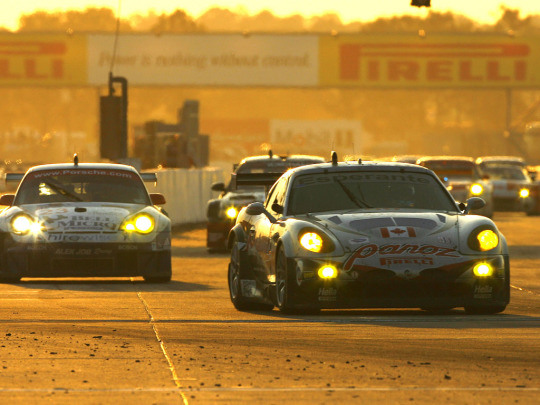
6 notes
·
View notes
Text
1992 Mazda RX792 GTP
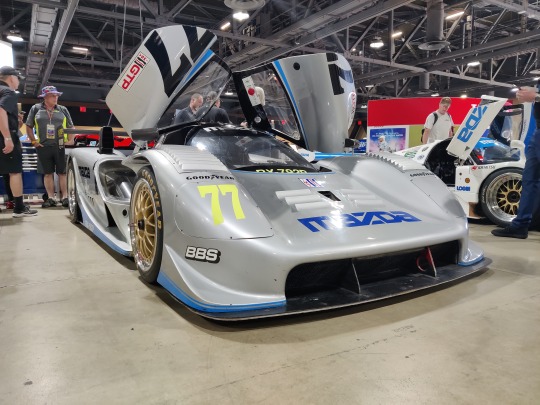
Just a short post for today. I had the great opportunity to see a lot of GTP cars from the 90s up close at this year's Long Beach Grand Prix. This car really sounded as beautiful as it looked.
11 notes
·
View notes
Text
2011 Aston Martin AMR-One

Photo credit Aurélien Vialatte From one end of the spectrum to the other, we get the ill-fated Aston Martin AMR-One: a failure so spectacular neither of the two prototypes managed to put in a combined total of six laps around the circuit in the 2011 24 Hours of Le Mans. The promise of the Aston Martin DBR1-2 had motivated the Racing Green fan favorites to build a new car fit for the changing regulations, downsizing from the wailing V12 engine to a rather shaky inline-6 that would at least give a wonderful symphony if anything.
youtube
The car's pace would be catastrophic, falling very short of the top times at the 6 Hours of Castellet and finding itself in the midst of LMP2 traffic in qualifying, then coming up short as a non-classification. It exited with a whimper at Le Mans, qualifying a staggering 20 seconds behind the R18 on pole. The #009 retired from engine troubles only two laps into the event, whilst the #007 met its cruel fate only two laps after at lap four, spending hours in the garage until they finally gave in.
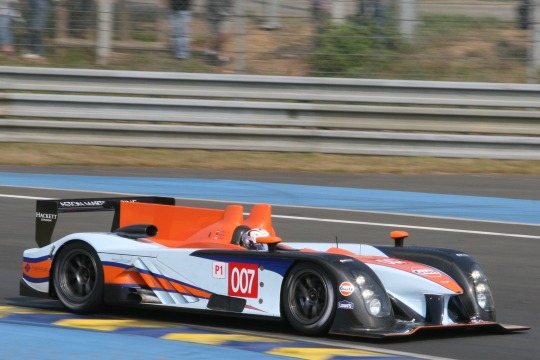
Photo credit Tom Schwede - 1300ccm.de
Aston Martin would replace the car with their previous DBR1-2 after a handful of DNS results and would, colloquially, take the project behind the shed by January 2012. One chassis would go to the Deltawing project whilst the other, strangely, went to Pescarolo.
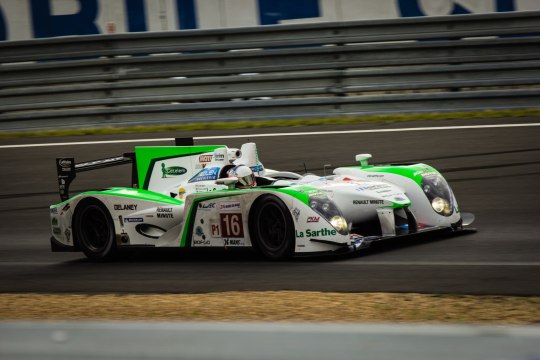
Photo credit Kevin Decherf
16 notes
·
View notes
Text
About the future of the Twitter page...
If you're worried about the Twitter bot going away, don't. I'll leave it on until Twitter inevitably shuts down or something, but I won't be adding or doing much with it for the future. I'll be pretty much focusing my attention on Tumblr since it's looking to be a lot more fun to put shit onto.
Hope you all understand, plus I do need to get over my Twitter addiction tbh.
3 notes
·
View notes
Text
2011 Audi R18 TDI

Photo Copyright Ferdi Kräling Motorsport-Bild GmbH It's only fitting that I kick off the blog with the car that basically embodies the spirit of the Le Mans 24.
A short-lived stint with the R15 led to the development of the first closed cockpit Audi prototype since the Audi R8C in 1999 (or technically the Bentley Speed 8 if you really consider it an Audi.) It featured 4 less cylinders than the previous engine with a 3.7L V6 single turbo situated at the rear, countering the Peugeot 908 HDi FAP's twin turbo setup.
Winner of the 2011 Le Mans 24 Hours in stunning fashion, it gave the German marque its 11th victory thanks to Marcel Fässler, André Lotterer and Benoît Tréluyer's stunning performance as the #2 machine held off a quartet of Peugeots, whilst the #1 and #3 cars retired both due to equally horrifying accidents.
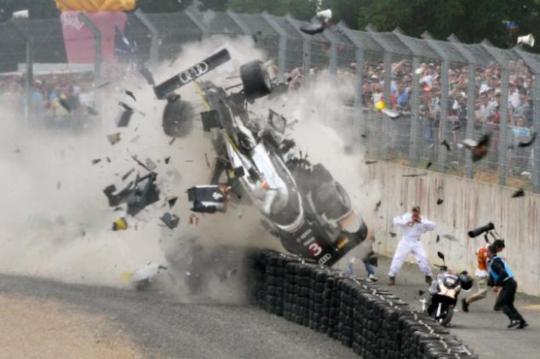
Allan McNish and several people trackside were luckily fine after this horrifying crash.
youtube
"Rocky" recounted the incident in a haunting manner, with confusion clouding his mind once the mangled car finally settled towards the dirt over the guardrail.
Leena Gade is also of note as she was the engineer behind the #2 team, leading them to victory against all odds. She became the first female engineer to capture the coveted crown.
16 notes
·
View notes
Text
A New Journey
Much like how a team introduces its new prototype to the hallowed ground of the Circuit de la Sarthe for the first time, we will also embark on another chapter of our history. If you have just come here from Twitter, this account will mostly be small tidbits about a car with an image and credit to the photographer, links to their website included. Unfortunately we have no bot to aid my lazy self. This also allows me to get more personal, as I'm not restricted to 240 characters anymore (thank gosh.) I can directly answer questions and even take requests directly from what I can see here, but I still need to do more research on how this all works to be honest. Thanks to a friend for inspiring me to start up my own tumblr from her own blog about Pokemon cards. If you like that sort of thing, head on over to https://www.tumblr.com/pokemon-card-of-the-day.
See you all around!
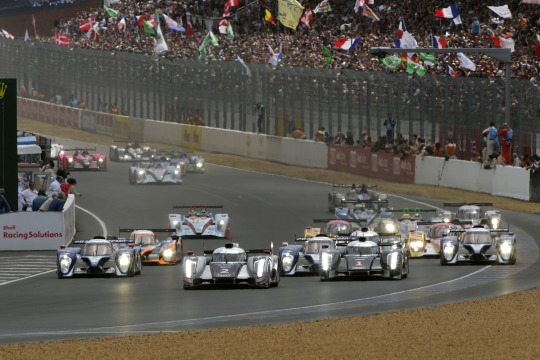
26 notes
·
View notes
